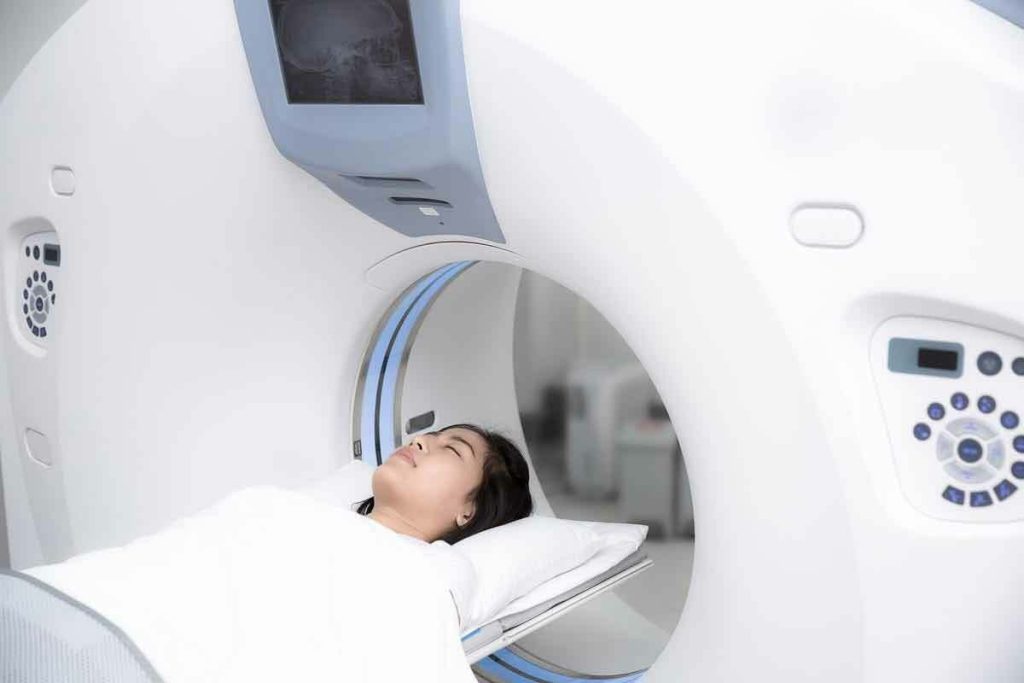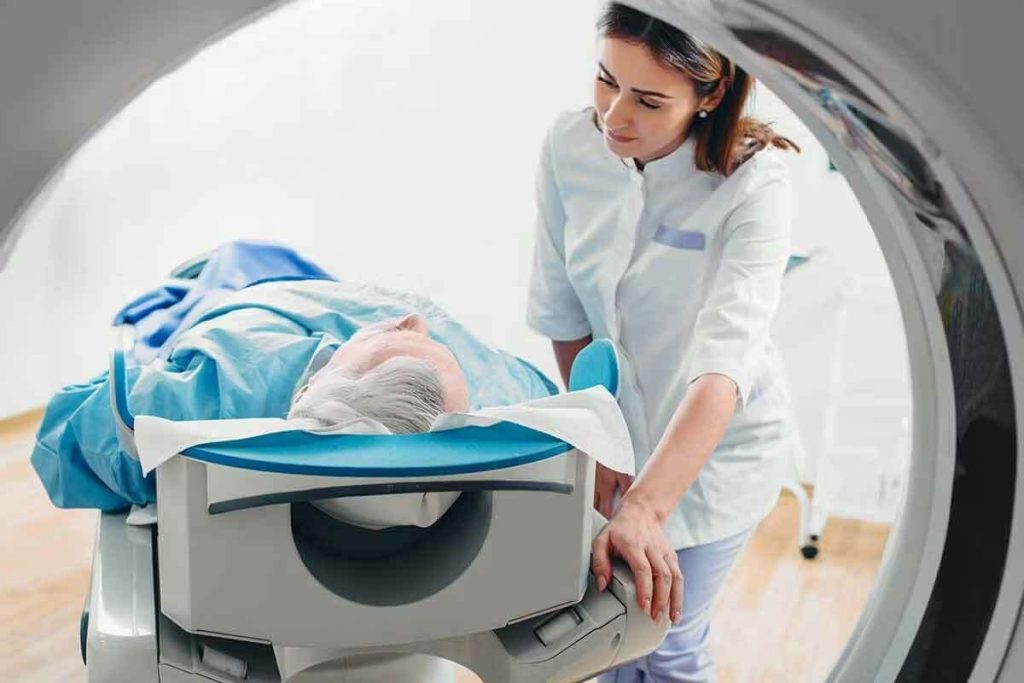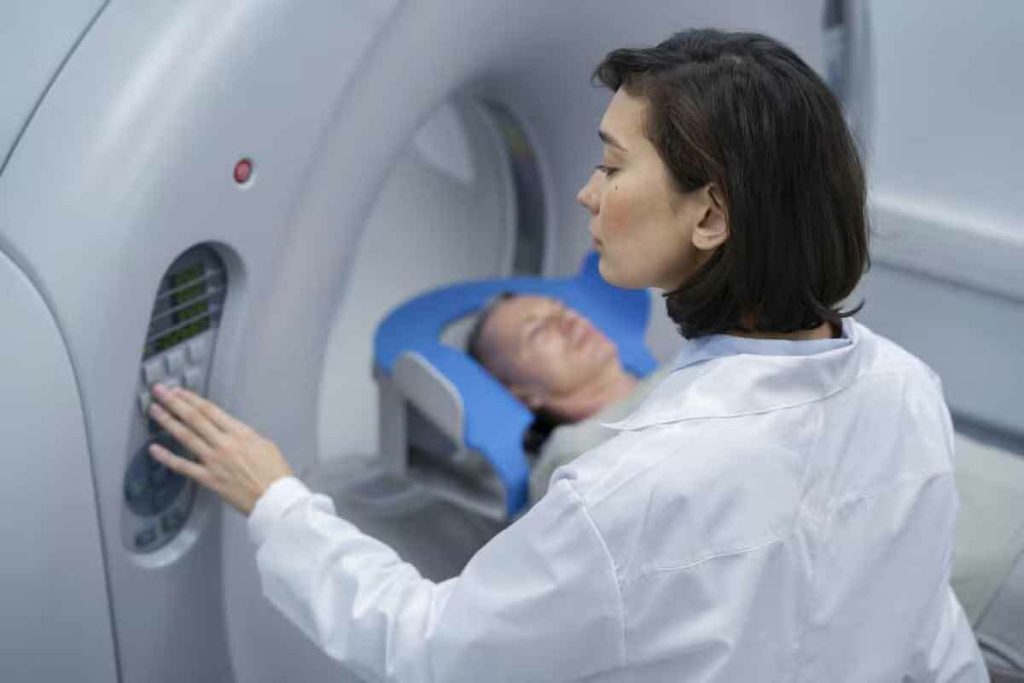Last Updated on October 21, 2025 by mcelik

At Liv Hospital, we know how vital it is to diagnose head and neck cancer accurately and quickly. Many patients ask, “Can a neck CT scan detect cancer? The answer is yes ” a CT scan is often the first step. It gives us detailed images that help us tell if a mass is cancerous or not.
Thanks to imaging technology, we can spot cancers in the head and neck area very well. While CT scans are quick and effective, MRI and PET scans are also key in finding and understanding cancer.
We use these tests to check out lumps, see if cancer has spread to lymph nodes, and determine how far it has gone. By picking the best test for each patient, we make sure they get the care they need.

Finding head and neck cancer early is key. It starts with knowing the common types and symptoms. These cancers happen in the head and neck area, like the mouth, voice box, throat, and glands.
There are many types of head and neck cancers. Squamous cell carcinoma, adenocarcinoma, and mucoepidermoid carcinoma are some. Squamous cell carcinoma is the most common, coming from the lining of the head and neck. Adenocarcinoma starts in gland cells, and mucoepidermoid carcinoma is a salivary gland cancer.
| Type of Cancer | Description | Common Location |
| Squamous Cell Carcinoma | Arises from squamous cells | Oral cavity, larynx, pharynx |
| Adenocarcinoma | Originates from glandular tissue | Salivary glands, thyroid |
| Mucoepidermoid Carcinoma | A type of salivary gland cancer | Salivary glands |
Some symptoms need a closer look with tests like CT scans. Look out for persistent neck lumps, sore throat that won’t go away, difficulty swallowing, and unexplained weight loss. If you notice these, see a doctor right away.
“Early detection of head and neck cancer significantly improves treatment outcomes. Being aware of the warning signs and seeking medical attention promptly can make a substantial difference.”
If a neck mass looks suspicious, a diagnostic path is started. It often begins with a CT scan of the neck. This scan shows detailed images of the mass and nearby areas.
The diagnostic process might seem tough, but the right tests and care can help. Our team is here to help you through every step of your journey.

A neck CT scan is a key tool for finding cancer, mainly in head and neck tumors. Modern CT scans are very good at spotting cancerous growths.
Research shows CT scans can spot head and neck tumors with up to 94% accuracy. This means most real cancer cases are found by CT scans. High sensitivity is key for early detection and treatment, which helps patients a lot.
CT scans also have high specificity, up to 93%, in telling apart cancer from non-cancer. This high specificity is important for avoiding wrong diagnoses. Being able to tell cancer from non-cancer helps avoid unnecessary worry and treatments.
Even though CT scans are very good, their accuracy can be affected by a few things. The size and where the tumor is, plus any artifacts, can change how well the scan works. For example, small tumors or those in hard-to-reach places might be harder to find. Knowing these can help doctors understand CT scan results better and decide what to do next.
Understanding both the good and bad of neck CT scans helps doctors make better choices for patients. This knowledge is key for finding the best ways to diagnose and treat head and neck cancer.
Understanding the CT scan procedure is key for patients with neck cancer. It helps find tumors and see if they’ve spread. We’ll show you what to expect during this process.
For a neck cancer CT scan, you’ll lie on a table that moves through a scanning ring. This usually takes just a few minutes.
It’s important to stay very quiet during the scan. This helps get clear images.
CT scans can be done with or without contrast agents. These agents, like iodine, make some areas or structures in the neck more visible.
Studies show that contrast agents can greatly improve CT scan accuracy for head and neck cancers (PMC10670676).
Yes, CT scans do involve radiation. But, the benefits of diagnosing neck cancer often outweigh the risks.
We work hard to reduce radiation exposure. We aim to get the needed info without harming you.
When we look at a neck CT scan, we see both normal parts and any signs of cancer. This scan gives detailed images. Doctors use these images to find problems and plan treatment.
A normal scan shows clear, defined parts of the neck without any unusual growths. But, if we see masses, lesions, or big lymph nodes, it might mean cancer. We check for any odd shapes or growths in the images.
Key features of normal anatomy include:
Suspicious findings, on the other hand, may include:
Malignant masses have clear signs that set them apart from benign ones. They often have jagged edges, grow big, and show up more with contrast. Benign masses, by contrast, have clear edges and don’t show up as much with contrast.
Characteristics of malignant masses include:
Benign masses, on the other hand, are often characterized by:
Neck cancer types look different on a CT scan. For example, squamous cell carcinoma shows up as a mass with jagged edges and contrast enhancement. Lymphoma looks like big, uniform lymph nodes.
Understanding how different cancers look on a CT scan is key for accurate diagnosis and treatment. By studying the scan, we can figure out the cancer type and how far it has spread. This helps doctors plan the best treatment.
CT scans are key in checking neck lumps and lymph nodes. They give vital info for diagnosis and treatment plans. If a neck lump is found, it’s important to know if it’s cancerous. A CT scan shows detailed images of the lump and nearby areas.
A CT scan can spot neck lumps that might be cancerous. It looks at:
By checking these, a CT scan can tell if a lump might be cancer. It helps decide what tests to do next.
Checking lymph nodes on a CT scan is key for cancer spread. Big or odd-looking lymph nodes might mean cancer has spread. A CT scan looks for:
If a CT scan shows a lump or lymph node might be cancerous, a biopsy might be needed. The choice to do a biopsy depends on:
A biopsy gives a clear diagnosis. This is key for deciding on treatments like surgery, radiation, or chemo.
It’s important to know the differences between MRI and CT scans for diagnosing head and neck cancer. Each has its own strengths and is used in different situations.
An MRI of the neck can show soft tissues in detail. This makes it great for finding some head and neck cancers. MRI shows soft tissues better than CT scans, helping spot tumors that CT might miss.
For example, MRI is best for cancers in the tongue or floor of the mouth. It helps see how far the tumor has spread into nearby tissues.
MRI’s best feature is its soft tissue contrast. This lets doctors see tumors and how they relate to other tissues. It’s key for planning surgery and radiation therapy.
MRI can also spot perineural invasion, where cancer spreads through nerves. Knowing this helps doctors predict how the cancer will grow and plan treatment.
Even though CT scans are quicker and easier to get, MRI is better in some cases. This is when you need to see soft tissues clearly, like in complex areas.
Also, MRI is good for people who can’t have CT scans, like pregnant women or kids. It uses no ionizing radiation.
Knowing when to use MRI or CT scans helps doctors make better diagnoses. This leads to more effective treatments for head and neck cancer patients.
PET/CT scans are key in finding and understanding neck cancer. They mix PET’s metabolic info with CT’s body details. This gives a full picture of the disease.
PET/CT scans are special because they combine two types of images. They show not just where tumors are but how active they are.
PET/CT scans are very helpful in managing neck cancer. They help find the main tumor, check lymph nodes, and spot metastases. This info is key for planning treatment. They also help find cancer that comes back, so it can be treated early.
Key Benefits of PET/CT Scans:
PET/CT scans give detailed info that changes how doctors plan treatment. They help find out how far cancer has spread. This leads to better treatments that match the patient’s needs. This can make treatments more effective.
| Imaging Modality | Primary Use | Benefits in Neck Cancer |
| PET/CT | Initial Staging, Recurrence Detection | Accurate disease extent assessment, guides treatment planning |
| CT | Anatomical Detail | Assesses tumor size and location |
| PET | Metabolic Activity | Evaluates tumor aggressiveness |
Ultrasound and endoscopy are key for checking head and neck cancer. They give extra info that helps in diagnosing and knowing how far the cancer has spread.
Endoscopy is great for seeing inside the throat. It finds cancers that CT scans might miss. A medical expert says,
“Endoscopy allows for direct visualization and biopsy of suspicious areas, providing a definitive diagnosis in many cases.”
This is key for throat cancers, where finding it early is very important.
Endoscopy shows details of the mucosal surface and small lesions that CT scans can’t. It’s a big help in fighting throat cancer.
Ultrasound is good for looking at neck masses close to the skin. It’s great for checking lymph nodes and other superficial structures.
We use ultrasound to guide biopsies and watch how neck masses change. This info is key for deciding treatment.
Using CT scans with ultrasound and endoscopy makes a complete plan. This multi-modal approach ensures we get all the info about the cancer.
By combining these tests, we get a clear picture of the cancer. This helps us make a treatment plan that fits the patient’s needs.
Choosing the right imaging test for neck cancer is complex. It requires knowing the strengths and weaknesses of different tests. We’ve looked at how CT scans, MRI, and PET/CT scans help find and stage neck cancer.
The right test depends on many factors. These include the cancer type and stage, the patient’s needs, and what imaging options are available. We aim to pick the test that gives the most accurate and detailed info.
When we compare CT scans, MRI, and PET/CT for neck cancer, each has its benefits. CT scans are great at finding tumors. MRI shows more detail in soft tissues. PET/CT combines metabolic and anatomical info, helping with initial staging and finding cancer again.
Knowing the good and bad of each test helps us make better choices. This way, doctors can plan treatments that work best and help patients get better.
Yes, a neck CT scan is a key tool for finding cancer in the head and neck. Modern CT scans can spot tumors with up to 94% accuracy.
A CT scan of the neck can find many conditions, including cancer. It gives detailed images to help doctors tell if a mass is cancerous.
Yes, an MRI can show cancer, mainly for certain head and neck cancers. It’s better at showing soft tissues than CT scans.
A CT scan helps spot suspicious lumps by showing their size, location, and details. This helps doctors check if it might be cancer.
CT scans show the body’s anatomy well. MRI is better for soft tissues, making it great for some head and neck cancers. The right choice depends on the case.
Yes, endoscopy is good for finding throat cancer when CT scans aren’t enough. It lets doctors see the throat directly.
Yes, a CT scan can find a neck lump and show its details. This helps doctors figure out if it’s cancerous.
A neck CT scan shows detailed images of the neck. It helps doctors find and check masses or abnormalities.
Finding a neck lump involves a physical check and imaging tests like CT scans. These tests give detailed images to assess the lump.
The best scan for cancer depends on the cancer type and location. CT scans, MRI, and PET/CT scans are all useful, each with its own strengths and limits.
Yes, endoscopy can show throat cancer by directly viewing the throat. It’s a key tool for diagnosing throat cancer.
Yes, a CT scan can find lymph node cancer by showing the size and details of lymph nodes. This helps doctors see if cancer has spread.
Subscribe to our e-newsletter to stay informed about the latest innovations in the world of health and exclusive offers!
WhatsApp us